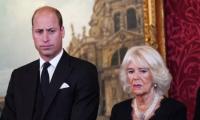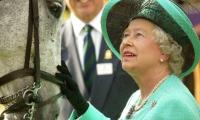The People’s Bank of China unexpectedly lowered the cost of its one-year policy loans by the most since April 2020, acting days after cutting a key short-term rate in a sign of greater support for the slowing economy, reports Bloomberg.
The central bank decreased the rate of the medium-term lending facility by 20 basis points to 2.3 per cent, according to a statement Thursday, the first reduction in almost a year. The cut followed the PBOC’s trim of the seven-day reverse repo by 10 basis points on Monday. The monetary authority has recently downplayed the MLF in favor of the short-term rate to guide markets in a way more similar to global peers.
“It is basically a coordinated effort across all the key interest rates to ease monetary policy,” said Lynn Song, Greater China chief economist at ING Bank. “It’s worth highlighting this round of easing kicked off with the seven-day RR, which may be a signal of its future role as the main policy rate.”
China’s bond futures edged higher with the yuan after the cut, though the moves were modest.The PBOC’s string of rate cuts underscores authorities’ growing urgency to support growth, which came in worse than expected in the second quarter as faltering consumer spending more than offset an export boom. The central bank had refrained from cutting rates since late last year as it sought to keep the yuan exchange rate stable.
The announcement was unexpected because the PBOC typically conducts MLF operations in the middle of each month, and had already drained a net 3 billion yuan ($413 million) of cash via the funds earlier this month when a batch of them matured. The PBOC provided 200 billion yuan of MLF on Thursday, the biggest net injection since January.
PBOC’s Shift
The sequence of the rate cuts and the off-schedule MLF operation underlines the PBOC’s transition toward a new framework.
Making the seven-day reverse repo the main policy lever that guides lending and longer-term rates could allow the PBOC to send out a clearer signal and better influence the market. Along with the new tool of government bond trading that has yet to be used, the shift could potentially give the central bank more sway over borrowing costs from short to long-term durations.
Taken together, the rate cuts amount to a modest round of easing this time around, and are unlikely to move the needle in terms of boosting domestic demand in the absence of any improvement in the overall jobs market, economists say.
The cuts are “helpful but the impact of interest-rate cuts will likely be more muted given weak confidence and still entrenched expectations of house price decline,” said Michelle Lam, Greater China economist at Societe Generale SA. “That is still insufficient to turn around people’s weak expectations on jobs and income.”
The MLF remains too high both in absolute terms and also relative to the seven-day reverse repo, as market rates have come down and the spread between short- and longer-term borrowing costs narrowed, according to Lam.
Banks have had little appetite for the MLF funds in recent months, as a decline in market rates meant it became cheaper for them to borrow from each other than from the PBOC via the program. A bigger cut to the MLF rate helps bring it closer to market borrowing costs.
The rate on one-year negotiable certificates of deposit issued by AAA-rated banks, a gauge of short-term interbank borrowing costs, is now 1.9 per cent, cheaper than the MLF funds.
China's President Xi Jinping applauds during the opening ceremony of the Forum on China-Africa Cooperation in...
This photograph shows the logo of US multinational technology conglomerate Meta, taken on May 22, 2022. —...
This is a representational image of a person holding gold chains. — AFP/FileKARACHI: Gold prices decreased by...
An employee working at a textile factory in Pakistan's port city of Karachi, on April 7, 2011. — AFPLAHORE: There is...
People shop at a crowded market ahead of Diwali, the Hindu festival of lights, in the old quarters of Delhi, India on...
Roblox Corp Chief Executive Officer and Co-Founder Dave Baszucki seen in this image. — X/@DavidBaszucki/FileRoblox...







